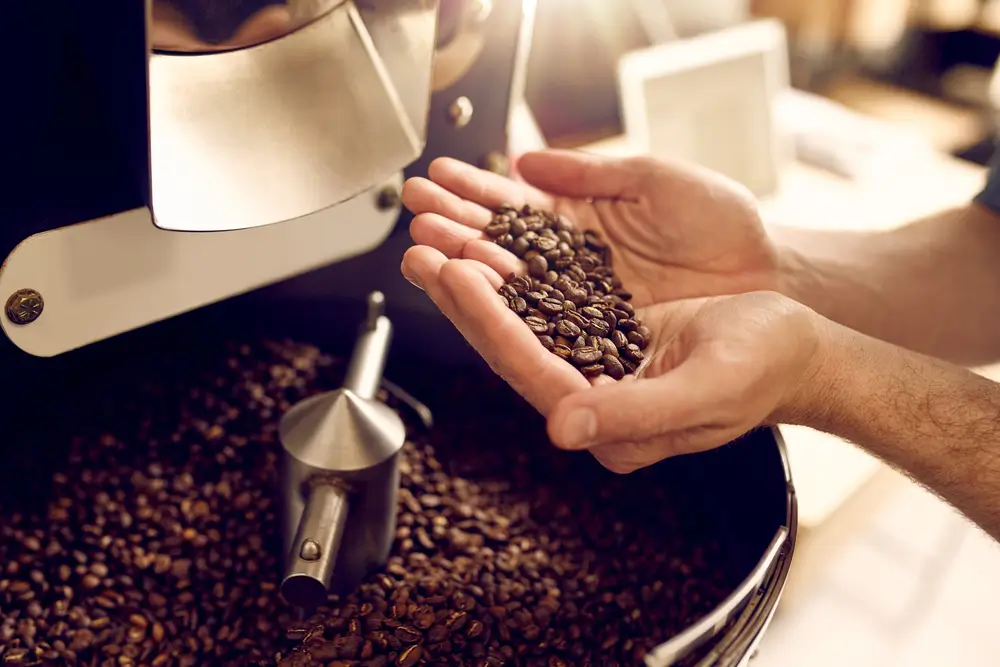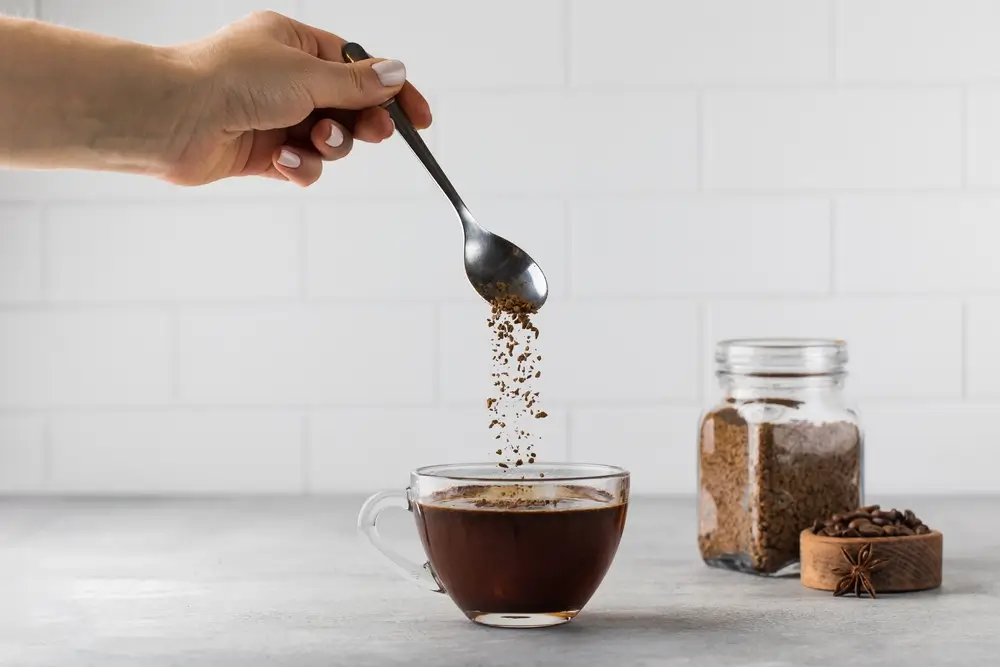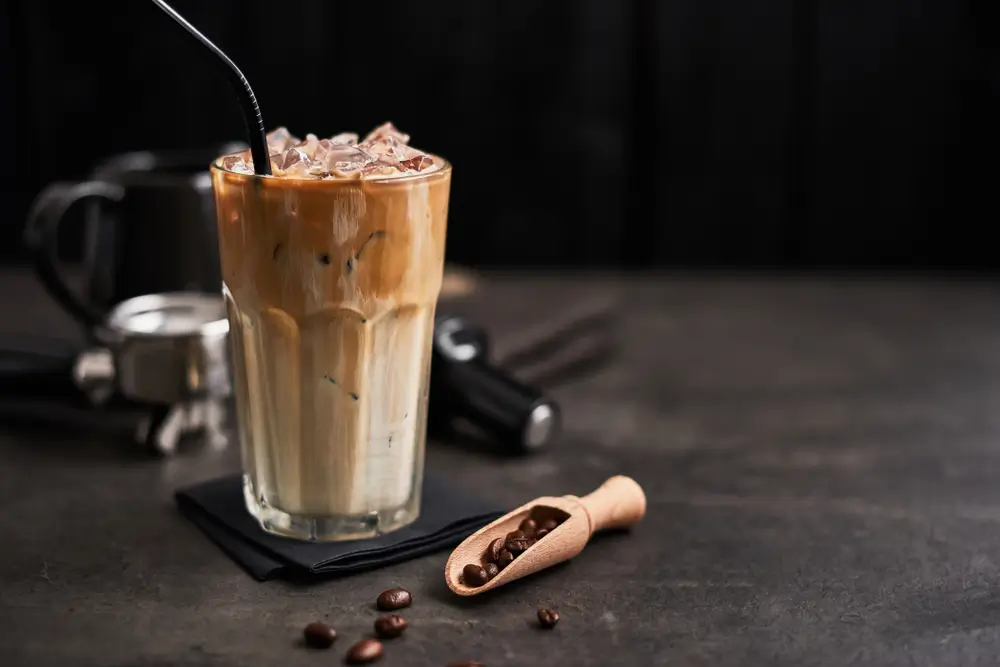There’s something about coffee moonshine that just screams perfect summer vibes. Imagine sipping on something that’s the epitome of cool and refreshing, with a naughty twist that’s all grown-up. It’s where the rich, beloved flavor of coffee meets the bold, unique taste of moonshine or your chosen spirit. And the best part? It’s super easy to make.
Once you get a taste of crafting your own boozy coffee concoction, you’ll be itching to experiment with new twists. Don’t worry, you won’t need a moonshine still for this – just your love for coffee and a little adventurous spirit!
Key Takeaways
- Coffee moonshine combines coffee’s robust flavor with the strength of moonshine or spirits.
- Essential ingredients include quality coffee beans, sugar, and yeast; key equipment involves a brewing vessel and fermentation container.
- Process involves brewing coffee, adding sugar and yeast, and allowing fermentation.
- Flavor variations can be introduced through different coffee roasts and additives like vanilla or cinnamon.
- Store in dark, airtight bottles in a cool place for optimal shelf life.
What is Coffee Moonshine?
Coffee moonshine is a homemade beverage blending coffee’s rich flavor with the potency of spirits. It is made by brewing coffee, dissolving sugar, adding yeast, and fermenting the mixture.
Originating as a creative experiment among home brewers, coffee moonshine has gained popularity for its unique blend of smooth, rich coffee tones and the potent kick of moonshine.
The flavor of coffee moonshine can vary based on the type of coffee used. Dark roast beans will impart a deeper, more robust flavor, while lighter roasts can offer a subtler, more nuanced taste. The moonshine base also plays a significant role in the final flavor. A quality base will ensure a smoother blend, making the coffee notes more prominent and enjoyable.
Essential Ingredients and Equipment
Creating coffee moonshine at home is surprisingly straightforward, but it requires some specific ingredients and equipment to ensure the process is both successful and safe.

Ingredients
- Coffee Beans: The quality of your coffee beans is paramount. Opt for high-quality, freshly roasted beans for the best flavor. You can choose between light, medium, or dark roast depending on your taste preference.
- Sugar: This is essential for the fermentation process. Granulated white sugar is commonly used, but you can experiment with brown sugar or honey for different flavor profiles.
- Yeast: Use a high-quality yeast specifically designed for brewing. This will ensure a clean fermentation process and optimal alcohol content.
- Water: Always use filtered or distilled water to prevent any impurities from affecting the flavor and fermentation process.
Equipment
- Brewing Vessel: A large pot or brewing vessel is needed for brewing your coffee mixture.
- Fermentation Container: This can be a specialized fermentation bucket or any large, food-grade container with a sealable lid.
- Airlock: To allow gases to escape during fermentation while preventing outside air from entering.
- Thermometer: Monitoring the temperature is crucial for both brewing and fermentation.
- Siphon: For transferring the brew between containers without contaminating it.
How to make Coffee Moonshine?

1. Selecting Your Coffee
Begin by selecting your preferred type of coffee beans. The choice between a dark roast for a bolder flavor and a light roast for a more nuanced taste will significantly influence the final taste of your moonshine.
2. Brewing the Coffee
Grind your coffee beans to a medium coarseness, resembling what you’d use for a drip coffee maker. In your brewing vessel, bring water to a boil—use about 5 cups of water for each cup of ground coffee. Once boiling, remove from heat and add the ground coffee. Allow it to steep for about 4-5 minutes before straining out the coffee grounds, leaving a clear coffee liquid.
3. Adding Sugar and Yeast
While your brewed coffee is still hot, dissolve sugar into it—aim for about 1 cup of sugar per 5 cups of coffee, adjusting to taste. Allow the mixture to cool to around 70-75°F (21-24°C) before adding yeast. This temperature range is optimal for yeast activation. Add the yeast as per the instructions on the packet.
4. Letting It Brew
Transfer the coffee, sugar, and yeast mixture to your fermentation container and seal it with an airlock. Place the container in a dark, cool spot and allow it to ferment. This process usually takes about a week to ten days, depending on the conditions and the yeast used. You’ll know fermentation is occurring by the presence of bubbling in the airlock, and it’s complete when this activity significantly slows down or stops.
Fermentation and Distillation
Once the brewing process is complete, the next critical phases in making coffee moonshine are fermentation and distillation. Since home distillation can be complex, this guide focuses on a non-distilled version that captures the essence of moonshine while remaining within the bounds of legality.
Fermentation Process
Keep an eye on your fermentation container. When the bubbling in the airlock slows or stops, usually after about 7-10 days, fermentation is likely complete. After fermentation, taste the brew. It should have a slightly sweet, strong coffee flavor with a hint of alcohol. Allow the brew to settle. Siphon off the clear liquid and discard any sediment. This step improves the taste and clarity of your moonshine.
Non-Distilled “Moonshine”
The strength of your moonshine will be lower than traditionally distilled moonshine, but the flavor will still be rich and robust. You can adjust the strength by varying the amount of sugar and yeast used during the brewing process. Let your coffee moonshine age in a cool, dark place. As it ages, the flavors will meld and mature, improving the overall taste. Once your moonshine has matured to your liking, bottle it in clean, sterilized bottles.
What Flavor to add to Moonshine Coffee?
- Experiment with Additives: After the basic brewing and fermentation process, you can customize your moonshine by adding various flavors. Vanilla, cinnamon, or caramel are popular choices that complement the coffee flavor beautifully.
- Gradual Testing: Start with small amounts of any additive and taste test your moonshine regularly. This approach ensures you don’t overpower the inherent coffee flavor.
- Infusion Time: Allow the flavors to infuse for at least a few days before tasting. This patience can significantly enhance the depth and complexity of your moonshine.
How to Store Moonshine Coffee?
- Use clean, airtight bottles for storage. Dark glass bottles are preferable as they protect the moonshine from light, which can alter the flavor over time.
- Store your bottles in a cool, dark place to slow the aging process and maintain the flavor. Avoid places with temperature fluctuations.
- While homemade coffee moonshine doesn’t have an indefinite shelf life, it can last for several months if stored properly.
Closing Thoughts
Coffee moonshine is like a chameleon of the drink world; it can take on any persona based on the combo of alcohol and coffee beans you choose. Think of high-quality vodka as your blank canvas – it’s so neutral it lets the coffee flavor really shine through. If you’re in the mood for something with a bit more punch, reach for something like Everclear to crank up the intensity.
Fancy a bit of smokiness? Whisky is your go-to. Opt for those that pack a punch, ideally 90-proof or stronger, though keep in mind this might overshadow the subtle notes of your coffee beans. It’s all about playing bartender and finding that sweet spot where the coffee and alcohol dance perfectly together.
Stay tuned for more coffee brewing guides, recipes, and bean roasts.


